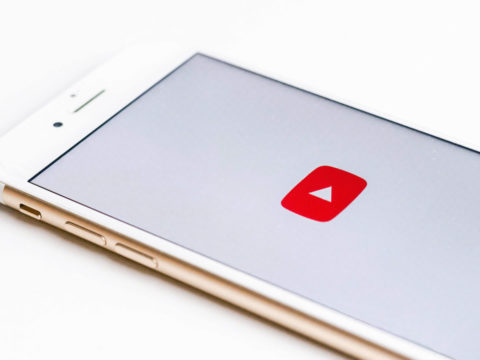2025
2024
2023
2022
Paid advertising trends for 2025: What companies can expect
In 2025, marketers will face a range of new challenges and opportunities. The increasing role of artificial intelligence (AI), data protection changes and the further development of platforms will continue to influence paid advertising in the next year. In this article, we take a look at the most important trends that can be expected in paid advertising in 2025.
#1 – Dominance of artificial intelligence in paid advertising
Artificial intelligence (AI) will play an even more central role in paid advertising in 2025. AI is already being used to create personalized advertising, address target groups more precisely and optimize campaigns in real time. But in 2025, AI-based technologies such as machine learning and automated decision-making processes will have an even greater impact.
Automation and creative optimization
AI will not only help to refine targeting, but will also automatically optimize creative elements such as ad images and copy. Advertisers can rely on AI to continuously adjust ad copy, image content, and even call-to-actions for the best possible performance. This will significantly reduce the need for manual adjustments while increasing efficiency.
However, marketers must ensure that this automation does not come at the expense of brand identity or ethical standards. Striking a balance between technological efficiency and human control will be crucial in 2025.
#2 – Stricter data protection regulations
With an increased focus on data privacy and the implementation of stricter regulations, advertisers will need to continue to adapt their data privacy strategies in 2025. Especially in Europe, with the introduction of stricter data protection regulations, it will become more difficult for companies to access third-party data.
The importance of first-party data
Advertisers will increasingly rely on first-party data, i.e. data collected directly from their own customers and users. This means that companies will have to invest more in their own data strategies, for example by collecting consent for data use. This will enable them to continue to deliver personalized advertising without relying on problematic third-party data.
Our tip:
With the combination of Google Analytics 4, server-side tagging and the advanced consent mode, you can establish a comprehensive tracking solution in your company and collect precise data without collecting personal data. Learn more in our whitepaper “GA4 and Server Side Tagging – The Path to a Data-Driven Future”. 📖
#3 – Further development of social
Social commerce, i.e. shopping directly on social media platforms, will continue to grow in importance in 2025. Platforms such as Instagram, Facebook and TikTok are already popular channels for selling products directly. But in 2025, these channels will be further expanded and interactive formats will be used more.
Shoppable video and interactive ads
One of the most exciting developments is something called “shoppable video”. This technology allows users to purchase products directly from a video, which both improves the user experience and increases conversion rates. Platforms like YouTube and Instagram will continue to expand this feature by integrating product feeds into videos that allow users to purchase with a single click.
Marketers should start experimenting with interactive ads now and continue to maximize the impact of video ads.
#4 – Shift to niche platforms
In 2025, there may be an increasing shift away from large platforms towards niche platforms. Users are increasingly looking for more individual, privacy-friendly alternatives to classic social networks. This trend is fueled by platforms like Mastodon and other decentralized social networks.
Targeted advertising in new networks
Companies will be forced to diversify their marketing strategies and expand them to include these niche platforms. There will be a valuable opportunity for advertisers to run hyper-targeted campaigns that are precisely aligned with specific interest groups or communities. Advertisers who engage with these new platforms must ensure that their ad formats are adapted to the respective user habits.
#5 – Increased importance of performance marketing
Performance marketing, which is strongly focused on measurable results such as clicks, conversions or sales, will continue to grow in 2025. With increasing pressure on budgets and the need to make marketing spend efficient, many companies will rely even more heavily on performance ads.
Focus on conversion optimization
Ads that drive measurable actions such as purchases, bookings or leads will play an even more central role. Companies will invest more and more in tools for conversion optimization to maximize the ROI (return on investment) of their campaigns.
#6 – Blurring the lines between online and offline
Although digital marketing is becoming more and more important, the integration of the online and offline worlds will continue to play a role in 2025. Campaigns that are synchronized in both physical stores and digital channels have the potential to reach a broader target audience and generate more conversions.
Omnichannel strategies
The linking of different channels, be it social media, e-commerce or offline advertising, will become more important than ever. Companies that integrate their campaigns seamlessly between these channels will benefit from the synergies that arise from coherent and consistent brand communication.
Outlook: How companies can prepare for 2025
2025 will be the year that companies are forced to make their paid advertising strategies even more flexible and privacy-conscious. AI and automation offer enormous potential, but the challenge will be to use these technologies responsibly and in accordance with applicable data protection regulations.
Advertisers should use their budgets more efficiently, recognize the importance of first-party data and performance marketing, and adapt to new platforms and advertising formats in order to not only be successful in the short term, but also to survive in the competitive environment in the long term.
Paid Advertising Trends 2024 – What You Should Know!
The advertising landscape of 2024 will be characterized by a variety of innovative trends that are changing the way companies interact with their target audiences. These paid advertising trends await you in 2024:
Video Advertising Trends
The preference for short video ads is increasing as consumers often avoid longer videos. This has led to the emergence of “bite-sized” video ads, with particularly short formats being popular on platforms such as Meta (Instagram/Facebook) and Twitter. These short formats have proven to be particularly effective, especially with Generation Z and Millennials.
Shoppable Video Ads
Interactive shoppable ads, where customers can buy products directly from the ad video, continue to gain traction. They have proven effective in capturing customers’ attention and increasing engagement, especially for smart TV ads.
Sound Off for Out-Stream Video Ads
Many users prefer video ads to play without sound, especially on social networks like Facebook and LinkedIn. That’s why advertisers are increasingly turning to outstream video ads, which play silently and only play sound if the user requests it. This has led to a higher click-through rate and longer engagement rates.
Authenticity in social media ads
Consumers are demanding authenticity in social media advertising. Brands that work with authentic, credible influencers, rather than relying on celebrities, often achieve better results. Micro-influencers in particular are preferred for their cost-effectiveness and the greater authenticity of their content.
eCommerce Advertising Trends
Amazon continues to dominate the e-commerce advertising space with a significant share of total e-commerce ad spending. The platform offers high profitability compared to other forms of advertising and is expanding into the sponsored product ad space on other premium platforms and websites.
Audio Digital Marketing Trends
Audio advertising, particularly in podcasts and music streaming services, is gaining traction. This form of advertising is cost-effective, easy to personalize, and has seen rapid growth in recent years, making it an attractive channel for marketers.
Content-Centric Trends in Advertising
User-generated content (UGC) remains a dominant trend as it is seen as more authentic and credible than brand-generated content. In addition, humorous, trendy and relatable content is favored on social media as it is seen as more authentic and memorable.
Diversity, equity and inclusion (DEI) marketing
Consumers increasingly expect brands to promote diversity and inclusion in their online advertising. Campaigns that showcase a variety of individuals and perspectives are becoming more and more important and are in demand among consumers.
Mobile Advertising Trends
Optimization for mobile devices remains essential for brands, as a large proportion of internet traffic comes from mobile devices. Mobile gaming is also becoming increasingly important as an advertising channel – with significant growth in the area of in-game advertising. The increasing prevalence of smart TVs and other CTV devices is also opening up new advertising opportunities.
Technology Trends in Advertising
Artificial intelligence is playing an increasingly important role in advertising. Tools like ChatGPT have led to an increase in the use of AI in marketing, with content and copywriting being particularly useful applications.
Personalization Trends in Advertising
Personalized advertising that targets specific consumer data remains a key trend. With the gradual abolition of third-party cookies, the focus is shifting to signal-based advertising strategies that are based on specific consumer behavior.
Have you heard about the PMax campaign? It fits well into this trend as it relies heavily on machine learning and AI technologies to optimize campaign performance. Artificial intelligence is increasingly used to improve advertising effectiveness by automatically selecting the best ad formats and channels to maximize engagement and conversions, as well as delivering relevant ads to the right audience. This reflects the trend towards personalizing advertising messages based on individual consumer preferences and behavior. 💡 These trends illustrate how dynamic and fast-paced the industry is. It also delivers relevant ads to the right audience, reflecting the trend towards personalizing advertising messages based on individual consumer preferences and behavior. 💡
These trends illustrate how dynamic and diverse the field of paid advertising is in 2024, with a strong focus on personalization, the use of technology, and authentic, customer-centric approaches.
These are the paid advertising trends you can expect to see in 2023!
We live in a world where technology and trends change rapidly. What is fashionable one season can be out of fashion the next. So what are the most important paid advertising trends that marketers should be aware of in 2023? We have compiled these seven key trends for you. Are you already prepared for them? We’ll show you what you should definitely have on your radar this year!
1. Programmatic Advertising
One of the biggest trends in paid advertising is the rise of programmatic advertising. Programmatic ad buying is an automated process that uses algorithms to buy digital advertising based on user data. This enables marketers to target specific audiences more effectively and efficiently than ever before. As programmatic ad buying continues to grow in popularity, it is likely that more companies will invest in this technology in 2023.
2. Personalized advertising
Advertising that is tailored to individual user data and behavior patterns. This can be used on a variety of platforms, including social media, search engines and websites. There are also different types of personalized advertising, such as retargeting, where ads are shown to users who have already been to a website, or lookalike audiences, where ads are shown to users who have similar interests and behavior patterns to a specific target group.
Personalized advertising is likely to continue to grow in importance as it enables companies to target their advertising campaigns at specific user segments and thus improve the effectiveness of ads. However, it is important that companies respect the privacy of their users and ensure that their data is processed securely.
3. Mobile advertising
The increasing importance of mobile advertising is an important trend this year: as more and more people access the internet via their smartphones, mobile advertising is becoming increasingly important.
This means that companies need to focus on optimizing their mobile advertising efforts, including developing mobile-friendly websites and using mobile-specific ad formats. In addition, the use of location-based targeting and personalization will continue to grow as advertisers seek to reach and engage their audiences on mobile devices in a personalized and relevant way.
4. Video Advertising
Video advertising refers to advertising campaigns that use video content to promote products or services. Video content is becoming more and more popular and will continue to play an important role in paid advertising.
There are many reasons why video advertising can be an effective form of advertising:
- Visually appealing: Video content is visually appealing and can give users a better idea of the product or service being advertised.
- Emotional: Video content has the ability to evoke emotions and create a strong connection with users.
- Easy to share: video content is easy to share and can spread quickly, which can help to increase the reach of an advertising campaign.
- Good for SEO: video content can help to improve a website’s visibility in search engines because it is often shared by users and is considered high-quality content by search engines.
5. Use of AI and machine learning
Another trend to watch out for is the use of artificial intelligence (AI) in paid advertising campaigns. AI can help marketers optimize their campaigns by analyzing data and making predictions about how users will respond to different ads. AI-powered tools can also automate tasks such as bidding, targeting, and budgeting, which can save marketers time and money.
6. Privacy and data protection
The increasing importance of privacy and data protection: As concerns about data protection continue to grow, paid advertising is expected to become more transparent and respectful of user data. This means that companies will have to pay more attention to how they collect, use and share user data in their advertising campaigns.
7. Integration of social media
Advertising in social media will continue to be an important trend in 2023. Social media platforms such as Facebook, Instagram, and Twitter have become powerful marketing tools for businesses of all sizes. With the right targeting and creative strategies, companies can reach their target audiences on these platforms more effectively than ever before.
Conclusion
It is important to note that these trends are only predictions and it is impossible to accurately predict how the paid advertising industry will develop in the future. It is worth actively following developments in the industry and keeping up to date with new technologies and strategies to prepare for future changes.
These were the 7 paid advertising trends for 2022
Lucky number seven – we’ve identified just as many trends that you can expect to see in paid advertising in 2022. Are you already prepared? We show you what you should definitely have on your radar for the coming year!
Switching to FLOC
Third party cookies Google is doing away with in the future – the end of personalized advertising? Not necessarily: FLOC, the short form of Federated Learning of Cohorts, will still allow you to play out target group-specific advertising in the future. Of course, it is then no concrete and individual user profiles more, but you still have the possibility to target groups. This is accomplished by collecting anonymized data from the cohorts.
Growing need for first party data
First party data is also becoming more and more important. Here you can use various marketing activities to get this information:
The best way to store data you collect about such and similar activities is in a customer relationship management system (CRM). This gives you a full overview, allows you to segment your site’s content and target it to appropriate recipients via ads.
Especially with Google Ads you can use this first party data skillfully. For example, if a user only ever downloads SEO-based content on your site, you can target ads based on that interest. Your campaigns will be more relevant and perform better through triangulation of behavior patterns and information.
Keyword research for ideal advertisements
As direct, individual targeting becomes more difficult, accurate research into how users search is more important than. Keywords are the keyword of the hour here! Focus on understanding the customer and offering information, solutions and products that will help them with their exact search or problem. Accurate keyword research and consumer behavior analysis are therefore essential for your ads.
Tip: You want to know how to approach the topic of keyword research? You get a detailed guide in our eo:magazine!
Focus of advertising: The target audience
Often, algorithm-enabled ads are created. Thus, the focus of the campaign is to please the search engine first and foremost in order to achieve better rankings. The attention that the potential customer pays to these, is virtually the “icing on the cake” and the reward for this. In 2022, however, the whole thing turns. Google always wants to present its users with the most relevant results – be it in the SERPs or in the ads. To make this possible, the target group should be the focus of your ads. The fact is, high-quality, customer-focused content will be more prioritized by Google in the future.
Conversion Rate Optimization
To stay truly competitive, you need to focus on optimizing your conversion rate in the coming year. You can do this by avoiding, as much as possible, any crunch points that make users’ lives difficult. This can occur, for example, when forms, buttons, etc. are not mobile optimized. Another case could be that a user clicks on your ad and the landing page does not match the actual offer. This creates dissatisfaction and consequently worse conversion rates.
Mobile customizations, however, are only one part you can implement to optimize conversion rates. Other ways to improve the ROI of your ad campaign include. Use of:
- social proof through reviews, testimonials, recommendations, etc.
- motivating call to actions to encourage the user to take action.
- clear, concise language that directly conveys the main advertising message
- personalized page content through sophisticated landing page concepts
- clear structures that lead the user to conversion in an uncomplicated and step-by-step manner
Also, make sure that the user experience of your campaigns is right. A/B tests can give you information about possible optimizations.
KI for clever ads
There’s no way around machine learning and AI in 2022. But don’t worry: the job of paid ads experts is not in danger! AI-powered advertising is the first step toward smart ads, yet a human is still needed to take the helm.
Google Ads is also switching more and more to machine learning. Thereby, the platform promises itself a better addressing of the target group, automated bids and general automation optimizations. Consequently, click-through rate and conversions are expected to improve.
Google Smart Bidding, for example, supports you with automated bidding strategies, allowing you to reduce advertising costs and reduce your manual effort. This will help you set up an efficient PPC campaign. Additionally, Google 2022 focuses heavily on value-based bidding strategies. Auto Applied Recommendation, or AAR, is designed to reduce manual effort.
In addition, for 2022 Google wants advertisers to switch their ads to “Maximize Conversion Value” or ROAS. This should make it possible for you to increase your valuable conversions and also reduce your manual effort. Optionally, you can still store a target ROAS, which should enable you to meet your fixed goals.
Changes in campaign types
Two big changes are also on the horizon for Google Ads 2022:
- Performance Max campaigns move into focus
- Text-based ads to be discontinued in June
Through this ad type, ads can be served across the entire Google Ads network. This allows for variable playout of the campaign and brings several advantages:
- Improve performance
- Maximization of reach
- Time savings and consequently more growth
- Competitive advantages
By combining the campaign with machine learning, auction data is monitored, and automated bids are created. Also, automated creatives based on your assets are used for this campaign type. Through data-driven attribution in the search network, awareness as well as conversion rate is also increased. This is to get the “maximum performance” out of your ads.
Text-based ads become final RSA campaigns
Responsive Search Ads, or RSA for short, will be the go-to when it comes to text ads starting next year. For this, you create a variety of headlines and descriptions that Google’s artificial intelligence dynamically puts into the right combination. This allows users to be reached and addressed in a more targeted manner, which in turn can increase conversion rates.








